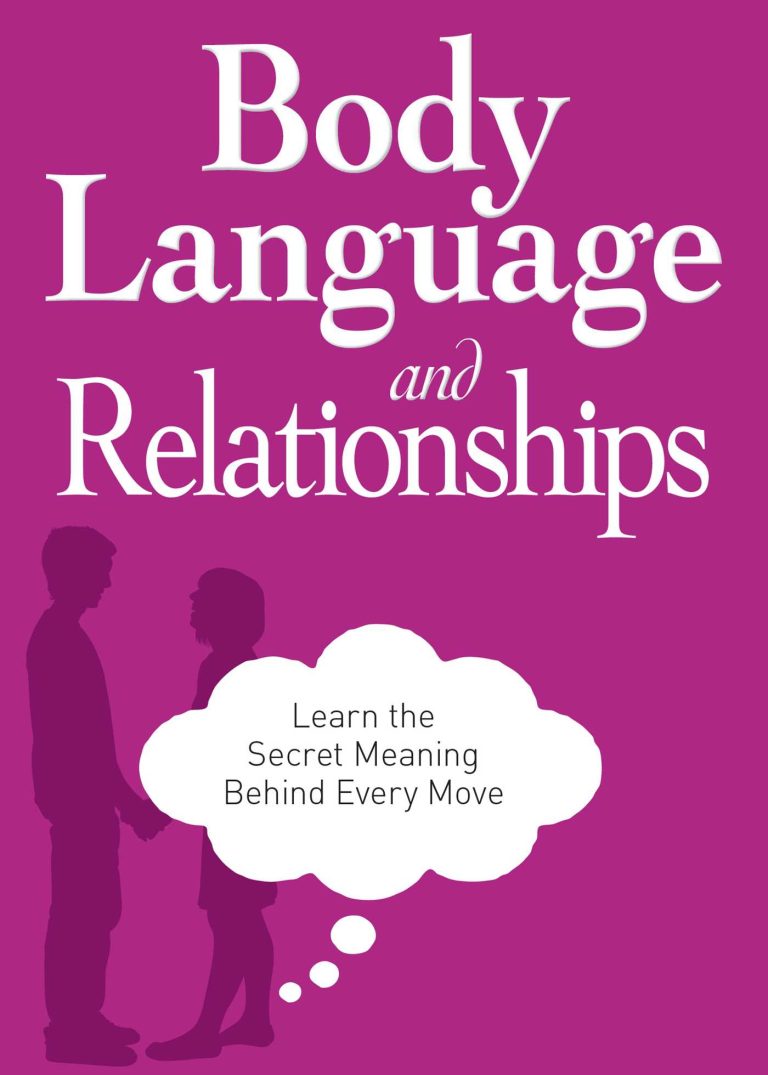Annoyed Body Language
Do you ever find yourself feeling frustrated or irritated, but your words don’t quite capture your emotions? Well, you’re in luck! In this article, we’re diving into the world of annoyed body language. Yes, that’s right, the subtle cues and expressions that can give away your annoyance without saying a word. So, if you’re curious to learn more about how body language can reveal your true feelings, keep on reading!
Have you ever crossed your arms, rolled your eyes, or let out an exasperated sigh when you’re annoyed? These are all examples of annoyed body language. Our bodies have a unique way of expressing our emotions, and when we’re annoyed, our non-verbal cues can speak volumes. Whether it’s a furrowed brow or a clenched fist, paying attention to these subtle signals can help you understand others better and recognize when someone is annoyed with you. So, let’s unlock the secrets of annoyed body language together!
Now, you may be wondering, why is understanding annoyed body language even important? Well, besides helping you navigate your social interactions, being able to recognize when someone is annoyed can also help defuse tense situations and improve communication. By picking up on these non-verbal cues, you can adjust your approach and find ways to address the underlying issues causing the annoyance. So, let’s delve deeper into the fascinating world of annoyed body language and discover the hidden messages our bodies communicate. Get ready to decode those eye rolls and crossed arms!
Discover Powerful Nonverbal Cues: Understanding body language can help you decipher if someone is annoyed. Look out for signs like crossed arms, furrowed brows, or eye rolling. Pay attention to their posture and facial expressions. Additionally, watch for signs of discomfort or agitation, such as fidgeting or clenched fists. These subtle cues can give you insight into someone’s emotions. Remember, body language is just one piece of the puzzle, so consider the context and other factors.

Annoyed Body Language: Understanding the Unspoken Signals
Body language is a powerful form of nonverbal communication. It plays a crucial role in expressing our emotions, thoughts, and reactions. One such emotion that can be easily conveyed through body language is annoyance. When someone is annoyed, their body language can exhibit various signs that give away their inner state of agitation and frustration. It’s important to decode these signals to effectively communicate and address the issue. In this article, we will explore the different aspects of annoyed body language and how to interpret and respond to such cues.
Causes of Annoyance and its Manifestation through Body Language
Annoyance can arise from a multitude of reasons, such as unmet expectations, disrespect, or even environmental factors. When someone is annoyed, their body language reflects their internal displeasure. Here are some common manifestations of annoyed body language:
1. Facial Expressions: An annoyed individual often displays furrowed brows, narrowed eyes, or a tense jaw. They may roll their eyes, sigh heavily, or grit their teeth as visible signs of irritation.
2. Posture: Annoyed body language is often characterized by a closed-off stance. Crossed arms or legs, hunched shoulders, and leaning away from the source of annoyance are common indicators.
3. Gestures: People who are annoyed may use abrupt hand gestures or finger pointing to emphasize their frustration. They may also engage in repetitive movements like tapping their fingers or tapping their foot.
4. Vocal Cues: The tone of their voice may become sharper, louder, or more clipped when displaying annoyance. They may interrupt others or speak in a curt manner.
5. Avoidance: Individuals who are annoyed often seek distance from the source of their irritation. They may turn their body away, avoid eye contact, or purposefully ignore the person or situation causing their annoyance.
Understanding these manifestations of annoyed body language can help us navigate difficult situations and address the root cause of someone’s annoyance.
Responding to Annoyed Body Language
When faced with someone displaying annoyed body language, it’s important to respond in a way that diffuses tension and resolves the underlying issue. Here are some tips:
- 1. Stay Calm: Responding to annoyance with anger or defensiveness will only escalate the situation. Stay calm and composed to create a more conducive environment for resolving the issue.
- 2. Active Listening: Give the annoyed person your undivided attention and actively listen to their concerns. Paraphrase their words to show empathy and understanding.
- 3. Apologize if Appropriate: If you are at fault or part of the reason for their annoyance, offer a genuine apology. Acknowledge your mistake and assure them that you will make an effort to rectify the situation.
- 4. Problem-Solving: Engage in a constructive conversation to find a solution that addresses the underlying issue. Collaborate and brainstorm ideas to prevent similar situations from occurring in the future.
- 5. Nonverbal Communication: Match your body language to a more open and understanding stance. Avoid crossing your arms or displaying defensive gestures. Maintain eye contact and use nods and affirmative gestures to show that you are actively engaged.
Remember, it’s important to approach annoyed individuals with empathy and respect. By acknowledging their feelings and addressing the underlying concerns, you can pave the way for better communication and resolution.
Common Misinterpretations of Annoyed Body Language
Misinterpretation 1: Anger
Annoyance and anger are often mistaken for each other. While they share similar traits, such as a change in facial expressions and body language, it’s crucial to differentiate between the two. Annoyance is a milder form of anger, characterized by irritation and frustration. It can be resolved with effective communication and problem-solving. On the other hand, anger tends to be more intense, often accompanied by aggressive behavior. Understanding the difference can help prevent potentially volatile situations.
Misinterpretation 2: Disinterest
People displaying annoyed body language may come across as disinterested or bored, but they are likely to be experiencing internal frustration. It’s important not to dismiss their feelings as mere disinterest. By acknowledging their annoyance and addressing the underlying concerns, you can re-engage them in the conversation or situation at hand.
Misinterpretation 3: Indifference
Annoyed individuals may exhibit body language that suggests indifference or detachment, but this is often a defense mechanism. They are trying to protect themselves from further annoyance or emotional distress. It’s essential to approach them with understanding and empathy to break through their defenses and reach a resolution.
Tips for Effective Communication
- 1. Emotional Intelligence: Develop your emotional intelligence to understand and manage your own emotions and recognize and empathize with the emotions of others. This will help you navigate difficult situations more effectively.
- 2. Active Listening: Practice active listening by giving your full attention to the speaker, maintaining eye contact, and refraining from interrupting. Reflect on what the other person is saying before responding.
- 3. Conflict Resolution Skills: Enhance your conflict resolution skills by learning techniques such as compromise, collaboration, and active problem-solving. These skills can help diffuse tense situations and promote understanding.
- 4. Open-Mindedness: Approach conversations with an open mind, willing to hear different perspectives and consider alternative solutions. Avoid defensiveness and be open to constructive criticism.
- 5. Practice Empathy: Put yourself in the other person’s shoes and try to understand their perspective and feelings. Show empathy through your words and actions to create a safe and respectful environment for communication.
By incorporating these tips into your communication style, you can foster healthier relationships, resolve conflicts, and effectively address annoyance or other emotions expressed through body language.
Annoyed Body Language at Work
The workplace is a setting where annoyance can easily arise due to the stress of deadlines, differing opinions, or conflicting priorities. Understanding and responding appropriately to annoyed body language in the workplace is crucial for maintaining a harmonious and productive environment. Here are some key considerations:
1. Recognize the Triggers
Be aware of the common triggers of annoyance in the workplace. These may vary from person to person but often include factors such as micromanagement, lack of appreciation, or excessive workload. Identifying and addressing these triggers can help alleviate annoyance and improve overall job satisfaction.
2. Foster a Positive Work Environment
Create a positive work culture that promotes open communication, collaboration, and mutual respect. Encourage employees to express their concerns without fear of judgment or reprisal. When employees feel valued and heard, they are less likely to display annoyed body language.
3. Provide Feedback and Recognition
Regularly provide constructive feedback and recognition to employees. Recognize their efforts and achievements to foster a sense of appreciation and validation. Address any issues promptly to prevent the buildup of annoyance or resentment.
Annoyed Body Language in Personal Relationships
Understanding and addressing annoyed body language is equally important in personal relationships. Ignoring or dismissing signs of annoyance can strain relationships and lead to misunderstandings. Here are some tips for maintaining healthy personal relationships:
1. Communicate Openly and Honestly
Establish open lines of communication with your loved ones. Encourage them to express their feelings and concerns without judgment. Actively listen and validate their emotions to promote understanding and resolution.
2. Practice Patience and Empathy
Be patient and empathetic during challenging moments. Rather than reacting defensively, try to understand the underlying cause of annoyance and address it with compassion and empathy.
3. Set Boundaries and Address Issues Promptly
Establish clear boundaries and expectations within your relationships. Address any issues promptly to prevent the buildup of annoyance and resentment. Engage in open and honest conversations to find mutually beneficial solutions.
Key Takeaways
Annoyed body language is a valuable form of nonverbal communication that can indicate a person’s inner frustration and dissatisfaction. By recognizing and understanding the manifestations of annoyed body language, we can respond effectively and address the underlying concerns. Whether it’s in the workplace or personal relationships, active listening, empathy, and effective communication can help diffuse tension and lead to mutually beneficial resolutions. By cultivating emotional intelligence and conflict resolution skills, we can navigate challenging situations and foster healthier and more fulfilling connections with others.
Key Takeaways: Annoyed Body Language
– Crossed arms and a frowning face indicate annoyance.
– Rolling eyes and sighing are signs of frustration.
– Avoiding eye contact and distancing oneself show disinterest.
– Tapping fingers and foot tapping suggest impatience.
– Raised eyebrows and shrugged shoulders display exasperation.
Frequently Asked Questions
Welcome to our FAQ section on annoyed body language. Here, we’ll explore some common questions and provide insightful answers to help you better understand this topic.
1. Why is body language important in expressing annoyance?
Body language plays a crucial role in expressing emotions like annoyance. When someone is annoyed, their body language can convey their feelings more powerfully than words alone. Furrowed brows, crossed arms, and tapping feet are all common signs of annoyance. By paying attention to these cues, we can better understand how others feel and adjust our behavior accordingly. It’s essential to be aware of body language to have effective communication and maintain positive relationships.
However, it’s important to remember that body language can vary among individuals and cultures, so it’s still important to take into account personal and cultural differences when interpreting someone’s annoyed body language.
2. What are some common signs of annoyed body language?
Annoyed body language can manifest in various ways. Some common signs include eye-rolling, sighing, crossed arms, tapping fingers, or fidgeting. These gestures typically indicate frustration, impatience, or dissatisfaction. Additionally, clenched jaws, tightened facial muscles, or a stiff posture can also be signs of annoyance. It’s crucial to observe these nonverbal cues in conjunction with verbal communication to accurately interpret someone’s feelings.
It’s worth noting that everyone has distinctive body language, so it’s essential to look for clusters of these signs rather than relying on a single gesture. By paying attention to these signals, you can better navigate social situations and resolve conflicts more effectively.
3. How can we manage our own annoyed body language?
Managing our own annoyed body language is crucial for maintaining healthy relationships and effective communication. Firstly, it’s important to identify the triggers that make us feel annoyed. By recognizing what frustrates us, we can develop strategies to regulate our emotions and respond more appropriately.
When we feel annoyed, it’s essential to practice self-awareness and take a moment to pause and breathe. Engaging in relaxation techniques, such as deep breathing or counting to ten, can help us regain composure and respond more calmly. Expressing our emotions assertively, rather than aggressively, can also be beneficial in reducing tension and promoting a more productive dialogue.
4. How can we respond to someone’s annoyed body language?
When someone displays annoyed body language, it’s important not to escalate the situation further. Instead, respond with empathy and understanding. By acknowledging their feelings and validating their emotions, we can create a more open and respectful environment.
Active listening is also crucial in responding effectively. By giving the person your full attention, maintaining eye contact, and showing genuine interest, you can demonstrate that you value their perspective. Avoid interrupting and allow them to express their concerns fully before offering any solutions or suggestions. Additionally, using open-ended questions can encourage them to share more and foster a constructive conversation.
5. Can body language alone determine someone’s annoyance?
While body language provides valuable insights into someone’s emotions, it’s important to remember that it is just one piece of the puzzle. Body language should be interpreted in conjunction with verbal cues, tone of voice, and the context of the situation.
For example, someone may be displaying annoyed body language, but upon further conversation, you may discover that they are actually stressed or worried about something entirely different. Therefore, it’s crucial to have open and honest communication to fully understand someone’s emotions and not solely rely on body language cues.
Body Language
Summary
Here’s a quick summary of what we learned about annoyed body language:
Sometimes our bodies can give away our emotions, like when we’re annoyed. We might cross our arms, frown, or roll our eyes. It’s important to pay attention to these signals because they can help us understand how others are feeling and adjust our behavior accordingly. By being aware of our own body language and recognizing it in others, we can improve our communication and build better relationships. So next time you notice someone’s annoyed body language, try to empathize with their feelings and find a way to address the issue.

